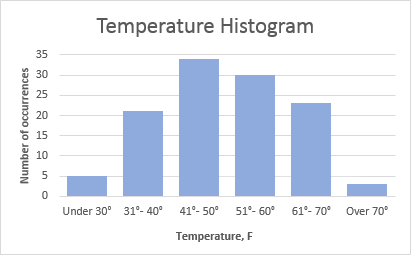


Show Options: selecting this button displays the options for Multiple Histograms (see below).All Histograms on one worksheet: option to put all the histograms on a single worksheet default is “False”, which puts each histogram on its own chart sheet.Row Containing Names: select the row containing the names of the charts (must be unique).First Histogram: range containing the data for the first histogram (must be in a column).The first histogram range is the range selected on the worksheet. The input screen for “Multiple Histograms” is shown. Select “Multiple” from the “Histograms” panel on the SPC for Excel ribbon.ģ. It stops once it encounters an empty cell in that first row.Ģ. The program will move across the row containing the first entry (B16) making a histogram for each column that contains data in the sixth row. Select the data in the column for the first histogram as shown in the shaded area below. You can enter the lower and upper specification limits along with the nominal as well in rows as shown below – these are not required.ġ.The name cannot have been used before on a worksheet tab or for the name of a chart. This is the name that will go on the worksheet tab if each histogram is put on its own sheet. There must be a row containing the name of the histogram.The data must be in columns with one column containing the data for each histogram.The data are entered into a worksheet as shown below (using part of the data from the example workbook). Options after Multiple Histograms are made.This page shows you how to make Multiple Histograms. Each of histograms can be easily be updated with new data.

The Multiple Histogram generates multiple Basic Histograms.


 0 kommentar(er)
0 kommentar(er)
